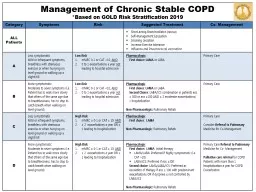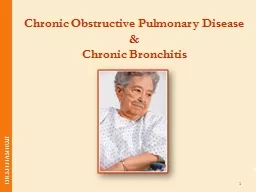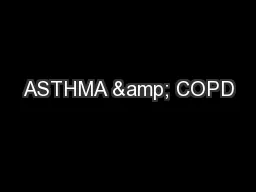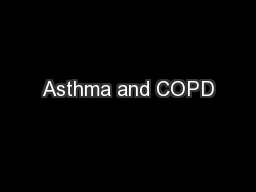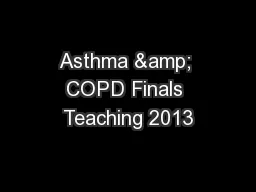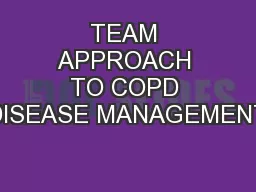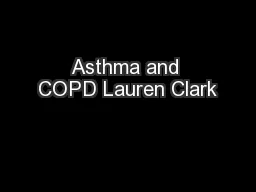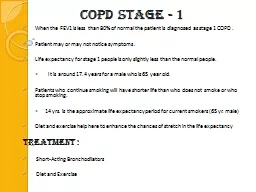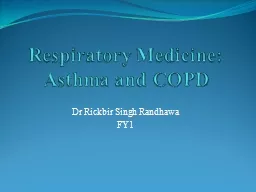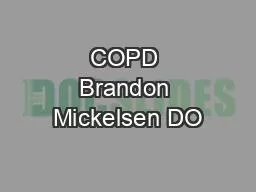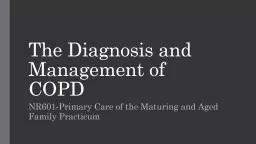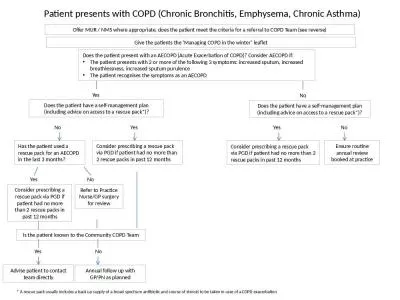PPT-Management of Chronic Stable COPD
Author : Heartstealer | Published Date : 2022-08-02
Based on GOLD Risk Stratification 2019 Category Symptoms Risk Suggested Treatment Co Management ALL Patients Shortacting Bronchodilator rescue SelfManagement Education
Presentation Embed Code
Download Presentation
Download Presentation The PPT/PDF document "Management of Chronic Stable COPD" is the property of its rightful owner. Permission is granted to download and print the materials on this website for personal, non-commercial use only, and to display it on your personal computer provided you do not modify the materials and that you retain all copyright notices contained in the materials. By downloading content from our website, you accept the terms of this agreement.
Management of Chronic Stable COPD: Transcript
Download Rules Of Document
"Management of Chronic Stable COPD"The content belongs to its owner. You may download and print it for personal use, without modification, and keep all copyright notices. By downloading, you agree to these terms.
Related Documents

